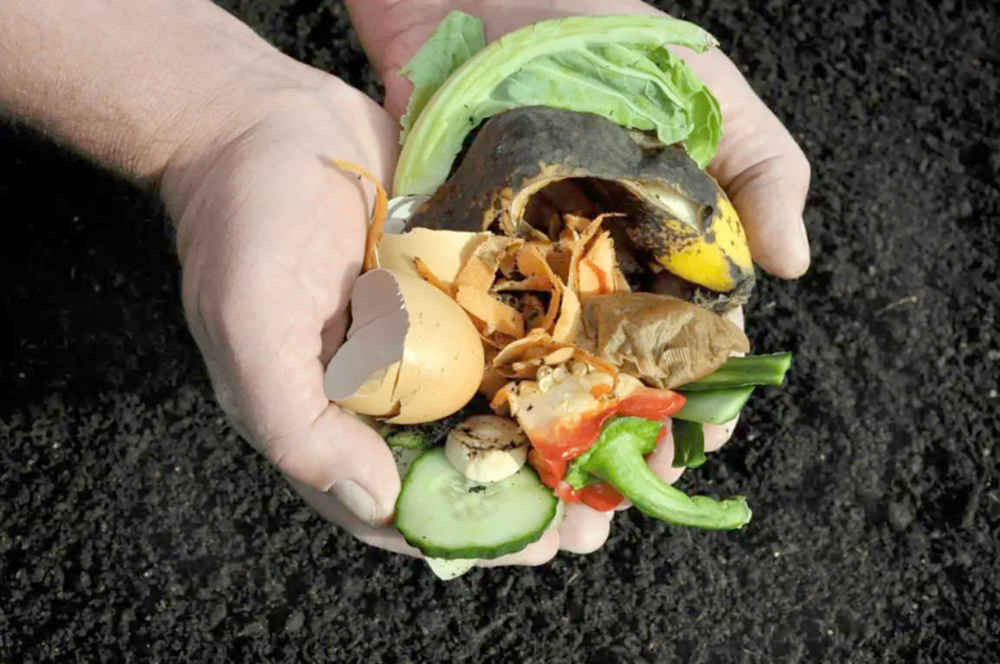By Lela McAferty
I don’t know about you, but I am always looking to save a buck. Along with saving as a priority, becoming a little more efficient in my day-to-day and helping the environment are definitely up there on my well-being list. At an early age, I learned some life lessons about my environment. No one is going to hand me anything. I need to learn from others, apply knowledge consistently and do it myself. That pretty much sums it all up. During this time, I learned that eating was much the same from an education and application aspect. From my love of nutrition came the love of gardening and growing, as the two go hand in hand. Somewhere along the way, recycling became a great habit our family has kept. In recent years, composting has become another.
Composting has always been very intimidating to me. What do I add to it? How do I start? Do I have to have a pile or a bin? Is it stinky? Are there bugs? I had a lot of questions for many years. I always talked myself right out of starting something new that would be great for my garden and the environment, thinking I had to know much more in order to start composting. However, I was taking a class a couple of years ago called “Our Global Environment.” In the class, a few challenges were presented. One challenge consisted of starting a new habit that would positively impact your local environment. Here was my opportunity! It became my motivation to learn how to compost.
It turns out there are so many ways to compost. It can be as easy or as involved as you want it to be. Once you learn what can go in the compost, commonly called greens and browns, and that the compost has to be turned and at an elevated temperature to decompose, it’s a piece of cake. Many things can go into a compost pile or bin. The most common are fruits and vegetable scraps, coffee grinds, egg shells (no meat or dairy), yard clippings, leaves and newspaper.
During my composting project, I joined a Composting 101 Facebook group. Almost any question I had, I found an answer within the group from experienced composters. No googling a million questions and hoping I found the right answer!
I selected a rolling bin to contain the compost since we have neighbors close by and little critters that roam, like rabbits, cats and raccoons. The rolling bin made it easy to mix the compost as well. A couple to a few times a week, I add the items above to my bin, along with some water, and give it a few good rolls until it is well mixed. The bacteria break down the compost. As the compost breaks down, it heats up, furthering the decomposition process.
I contribute to the compost year-round. By the spring, all ingredients have disintegrated. After preparing our garden bends, we dump the compost and sort out any food or newspaper chunks that may not have completely dissolved. Next, we mix it into our soil before we plant our garden.
The compost provides a number of benefits to the garden, such as: improving garden soil texture and structure, and stimulating healthy root development. Microorganisms in compost keep the soil healthy and balanced. Compost provides nutrients and minerals for optimal growth.
It feels good to see the results of a year-long effort while saving a buck! No matter our obstacles, learning something new to benefit our family or our environment is a great thing, even if we fail a little at the beginning. Most things are as simple or difficult as we choose to make them. Start small and work your way up when building new habits. Here is your sign, and I wish you luck in your new endeavor!
Lela McAferty holds a Master’s degree in Public Health Nutrition. She is a Nutrition and CrossFit coach at CrossFit OTG and owner of Armor Nutrition. She is a Coastie wife and mother of 2. Connect with Lela on Instagram @armornutrition or email lelamcaferty@gmail.com.










